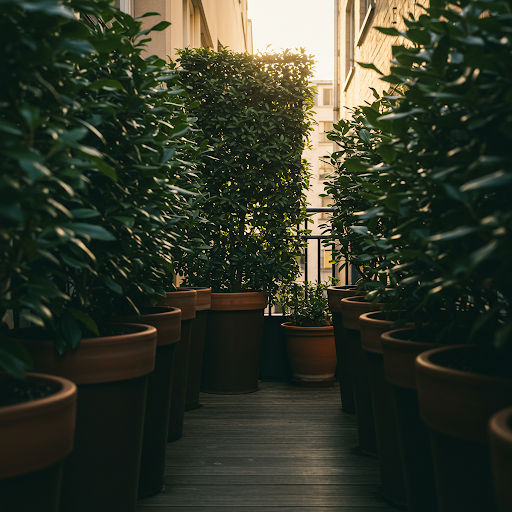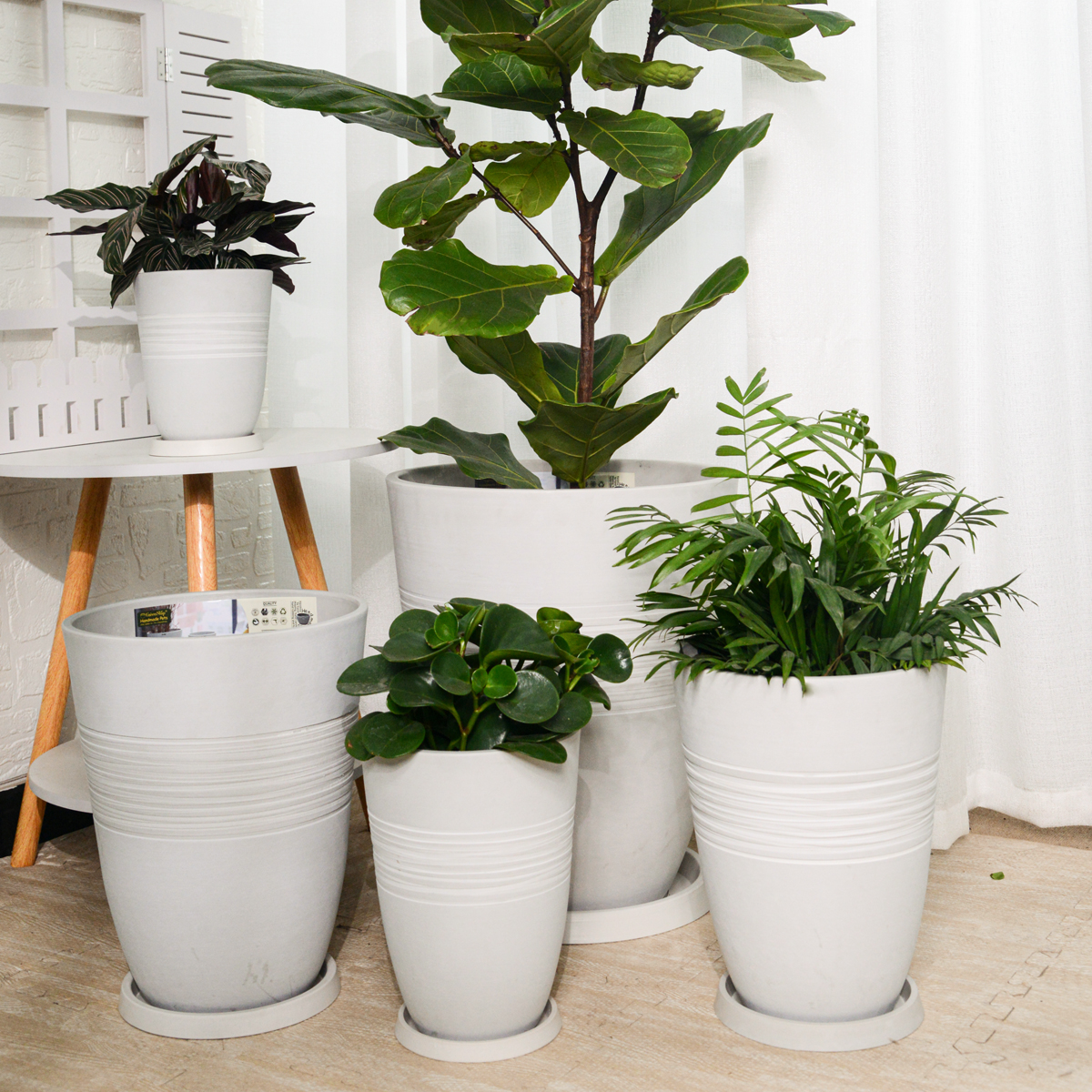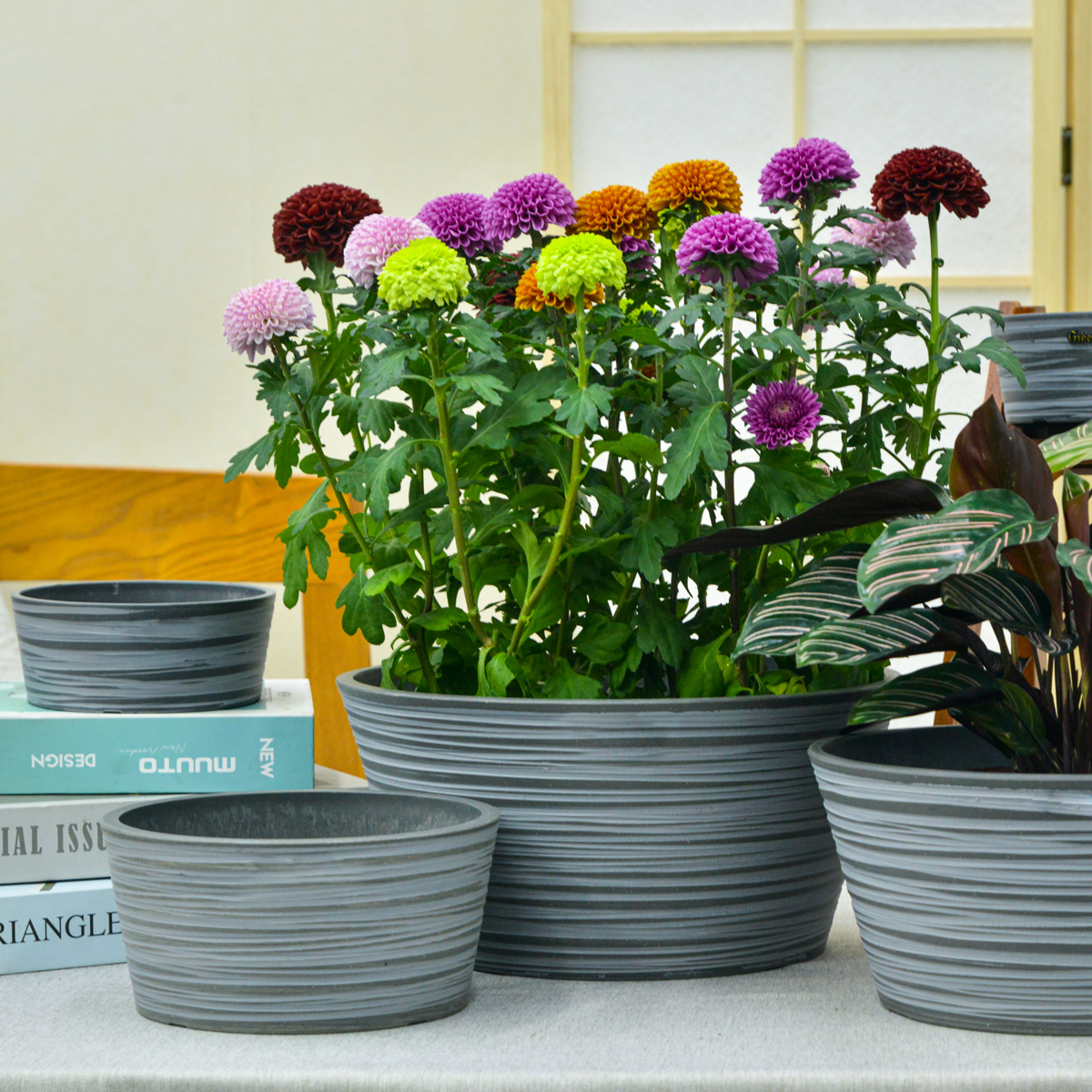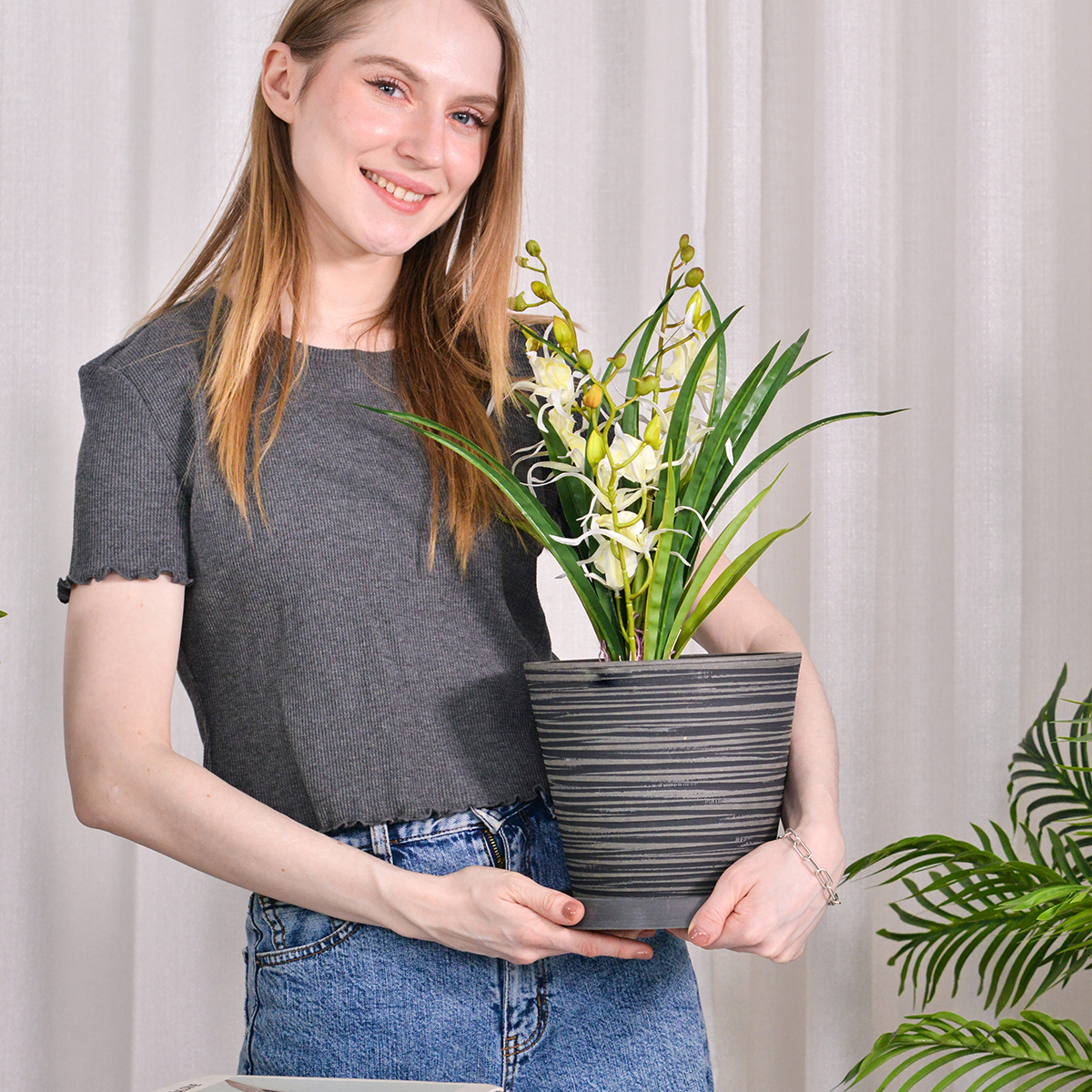What Are the Advantages and Disadvantages of Tall Planters Compared to Shorter Ones? In What Scenarios Are Tall Planters More Suitable for Use?
Choosing the right planters for your outdoor space involves considering various factors, including size and height. While shorter, traditional planters have their place, tall planters offer a unique set of advantages and disadvantages that make them more suitable for certain situations. Understanding these differences can help you make the best decision for your gardening needs and aesthetic preferences.

Advantages of Tall Planters:
- Ergonomics and Accessibility: One of the most significant benefits of tall planters is their height. They reduce the need for excessive bending or kneeling, making gardening more comfortable for individuals with back or knee issues. This elevated height also makes it easier to tend to plants without straining.
- Improved Drainage: Tall planters often have better natural drainage due to the increased depth. This allows excess water to drain away more effectively, reducing the risk of root rot, which is a common problem in shorter, wider containers.
- Protection from Pests and Animals: The added height can help protect your plants from ground-level pests like slugs, snails, and even some small animals like rabbits. Raising plants off the ground makes them less accessible.
- Enhanced Visual Appeal and Vertical Interest: Tall planters can add a dramatic and stylish element to your outdoor décor. They create vertical interest, drawing the eye upwards and adding dimension to your space. They can also make smaller plants appear more substantial.
- More Root Space for Certain Plants: The increased depth of tall planters can provide more room for plants with longer taproots or extensive root systems, allowing them to grow healthier and larger.
- Privacy Screening: When placed strategically, a row of tall planters filled with dense foliage can act as a natural and attractive privacy screen for patios, balconies, or decks.
- Cleaner Environment: Being elevated, plants in tall planters are less likely to be splashed with dirt during heavy rain or watering.
Disadvantages of Tall Planters:
- Potentially Higher Cost: Tall planters often require more material to manufacture, which can translate to a higher purchase price compared to shorter planters of similar volume.
- Can Be Less Stable in High Winds: Due to their height, tall planters can be more susceptible to tipping over in strong winds, especially if they are lightweight or not filled with heavy soil and mature plants.
- May Require More Soil: Filling a tall planter requires a significant amount of soil, which can be an added expense and effort.
- Watering Can Be More Challenging: While drainage is generally better, ensuring the entire soil column in a tall planter receives adequate moisture can sometimes be tricky. You might need to water more slowly and deeply.
- Moving Can Be Difficult: Once filled with soil and plants, tall planters can be quite heavy and awkward to move due to their height and weight distribution.
- Some Plants Might Not Be Suitable: While many plants thrive in tall planters, those that prefer very shallow root systems might not be the best choice.

Scenarios Where Tall Planters Are More Suitable for Use:
- Small Spaces (Balconies and Patios): Tall, narrow planters are excellent for maximizing growing space in compact areas without taking up too much precious floor space.
- Areas with Poor Soil: If your ground soil is unsuitable for gardening, tall planters provide a self-contained environment with high-quality potting mix.
- Preventing Access by Pets or Small Children: The height can deter curious pets or toddlers from reaching and potentially damaging plants.
- Creating Privacy Screens: Use a series of tall planters with appropriate plants to create a visual barrier and enhance privacy in your outdoor living areas.
- Growing Plants with Deep Root Systems: Vegetables like tomatoes and peppers, as well as some flowering plants and shrubs, benefit from the extra root depth provided by tall planters.
- Adding Vertical Interest to Landscaping: Incorporate tall planters as focal points or to break up horizontal lines in your garden design.
- For Individuals with Mobility Issues: The elevated height makes gardening more accessible for those who have difficulty bending or kneeling.
- Highlighting Specimen Plants: A single, striking plant can be showcased beautifully in a tall, elegant planter.
Ultimately, the choice between tall and shorter planters depends on your specific needs, the plants you want to grow, and your aesthetic preferences. By understanding the advantages and disadvantages of tall planters, you can make an informed decision that will enhance your gardening experience and the beauty of your outdoor space.
KC2-11VH
By greenship|2024-08-16T06:19:28+00:00August 16, 2024|Categories: Hand-carving Series|
11THD
By greenship|2024-08-13T02:52:20+00:00August 13, 2024|Categories: Hand-carving Series|
K2-11T
By greenship|2024-08-13T04:21:25+00:00August 13, 2024|Categories: Hand-carving Series|
Modern Plant Pots丨Planter for Indoor Plants,8 inch or 10 inch Plant Pots with Drainage Hole,Decorative Flower Pots
By greenship-seo|2025-04-10T08:32:55+00:00January 7, 2025|Categories: Hand-carving Series|Tags: Decorative Flower Pots, Self-Watering Pots|
20T
By greenship|2024-08-13T06:42:22+00:00August 13, 2024|Categories: Hand-carving Series|
KC2-21G
By greenship|2024-08-13T06:19:08+00:00August 13, 2024|Categories: Hand-carving Series|






